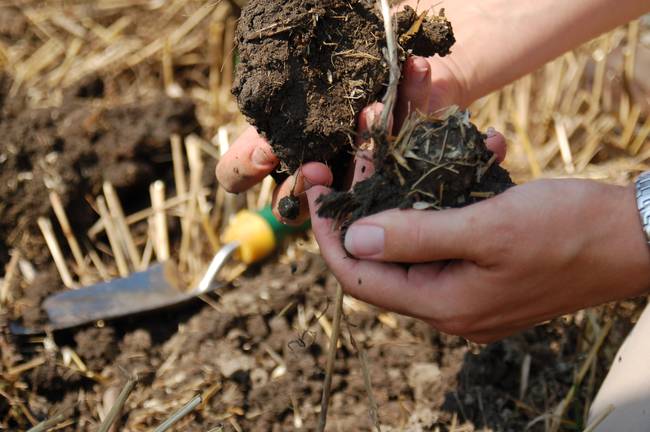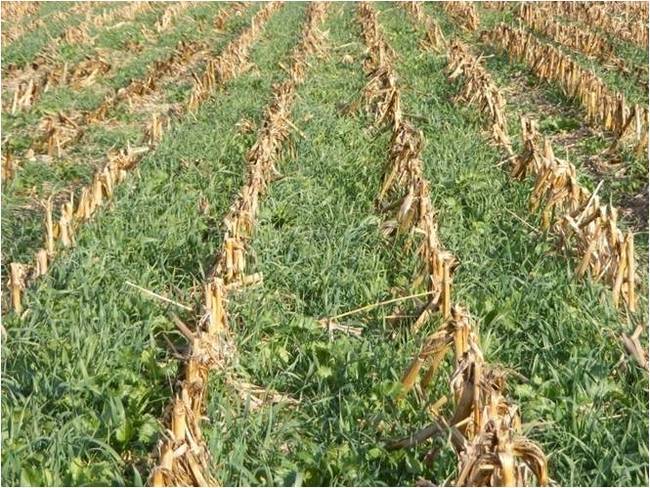By Carrie Vollmer-Sanders
Growing up on a farm, I had dreams of living in a big city or abroad and working a job where I could make a difference in the world. In my case, all roads led to home — the rural Midwest. Here, I work alongside my family, making a difference in the world by improving soil health, growing food and safeguarding our streams and rivers.
My husband, Ryan, and I come from a long line of farmers, and we’re continuing the family tradition as we work with my parents and our two boys, ages 8 and 9, to farm our lands in northwest Ohio and northeast Indiana. Most of my colleagues are surprised to learn about my “other life,” as my Nature Conservancy job takes up a lot of time, but in reality, my career — or rather my calling —as a conservationist goes hand-in-hand with my passion for farming.
© Ryan Sanders
A farmer’s goal is to be the best steward of their land. So, as conservationists and farmers, my family has a unique opportunity to help take farming to the next level — the sustainable level. While we implement tried-and-true conservation practices such as crop rotation and reduced tillage, we also test new techniques on our farm each year. Ryan and I bring a new set of eyes and understanding to technology, research, soil health, and nutrient management that we hope helps continue to grow our business and the science of sustainable agriculture.
One of our farms is part of the Soil Health Partnership, a 5-year research effort to demonstrate the economic and environmental benefits of various conservation practices. As part of this research, we worked with our agronomist to divide our field into planting zones, using GPS technology. Cover crops are planted into half of the zones in the fall after the main cash crop —corn, soybeans or wheat — is harvested to protect the soil during the winter. The remaining zones receive no cover crop, but are managed like the cover crops in every other way.
If we see green fields in the winter, it is probably wheat or cover crops. Green is good. The purpose of the cover crop is to protect the soil during the off season and keep it in place, thereby protecting water quality by reducing erosion and nutrient run off into nearby streams and rivers. It also builds organic matter in the soil, as well as feeds the microbes, fungi and other beneficial bugs and worms that help the roots grow.
 © Ryan Sanders
© Ryan Sanders
So far, our soil looks better, smells better and is healthier than before we started our research. As an added benefit, well-managed soils store carbon. Healthy soils can help reduce the impact of climate change by storing up to 10 percent of the world’s carbon dioxide emissions. By using conservation practices, farmers are not only helping to improve soil health, crop production and water quality, but we’re also making a positive impact on climate change.
My cousins, aunts and uncles, and some of our friends are trying cover crops, and we host field days to provide other farmers an opportunity to see the benefits firsthand. Ryan and I talk about cover crops, soil health and nutrient management at work and around the dinner table. Like I said, it’s a way of life.
 © Ryan Sanders
© Ryan Sanders
There is, of course, added cost for cover crop seeds and extra work to manage a new planting season. Fortunately, my family sees all of this as an investment in our business and our future and an opportunity to be good stewards of our lands and waters.
I may not live in a big city or work in a fancy office as I imagined while growing up, and that’s okay. I know now that as a farmer, as a conservationist and as a mother, I’m leaving a lasting legacy for my children and grandchildren. Together, we are changing the world, and for that, I am thankful.










